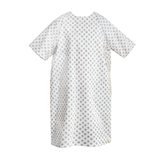As the global population ages, the importance of maintaining a high quality of life for older adults is becoming increasingly critical. Among the many advancements in healthcare, innovative muscle-strengthening technologies like High-Intensity Focused Electromagnetic technology (HIFEM) therapy are showing great promise. These non-invasive treatments, including HIEMT (High-Intensity Electromagnetic Muscle Therapy), are revolutionising the way we approach the physical well-being of elderly individuals, offering significant improvements in core muscle strength, functionality, and overall quality of life.
Advancing Core Muscle Strength and Functionality
Recent studies have highlighted the efficacy of HIFEM technology in enhancing core muscle strength among elderly individuals. A study involving 39 subjects aged 60-75 years revealed a remarkable 33.7% increase in core muscle strength at a 3-month follow-up, as measured by biofeedback pressure devices. This significant improvement was complemented by a reduction in waist circumference, averaging a decrease of 3.1 cm, with some subjects experiencing reductions of up to 10 cm. These results underscore the physical benefits of the treatment, which not only strengthens muscles but also enhances overall body composition.
Empowering Elderly Individuals for Active Living
The improvements in core muscle strength brought about by HIFEM therapy translate directly into better functional abilities. Participants in the study reported enhancements in body movement, flexibility, balance, and even urinary incontinence, all of which are critical for maintaining an active lifestyle. These advancements allow older adults to engage more confidently in daily activities, from simple tasks like walking and getting up from a seated position to more complex physical activities. By empowering the elderly to remain active, these treatments significantly contribute to their overall well-being and quality of life.
Saving Time and Money for Healthcare Providers
The efficiency of HIFEM therapy also offers considerable benefits to healthcare providers and institutions. The treatment requires fewer sessions than traditional muscle-strengthening methods, reducing both the time and cost associated with long-term care. This efficiency allows facilities to treat more patients without compromising the quality of care, making it a cost-effective solution for healthcare providers focused on elderly care.
Ensuring Safety and Comfort
One of the most appealing aspects of HIFEM therapy is its safety and comfort. The study reported no serious adverse events, and subjects experienced minimal discomfort during treatment. This non-invasive approach is particularly beneficial for older adults, who may be more vulnerable to the risks associated with invasive procedures. The high levels of patient satisfaction reported in the study further emphasise the comfort and effectiveness of the treatment, making it an attractive option for elderly individuals and their caregivers.
Reducing Discomfort and Improving Quality of Life
Beyond muscle strength and functional improvements, HIFEM therapy plays a crucial role in reducing discomfort associated with aging. Participants in the study reported less discomfort while carrying items, increased walking distances, and better self-care abilities. Additionally, more than 60% of subjects noted improvements in back discomfort, sexual performance, and overall ability to care for themselves. By alleviating these common issues, HIFEM therapy enhances the daily lives of elderly individuals, contributing to a more comfortable and fulfilling aging experience.
Conclusion
Innovative muscle-strengthening technologies like HIFEM and HIEMT are paving the way for a new era of elderly care. By enhancing core muscle strength, improving functional abilities, and ensuring patient comfort, these treatments offer a comprehensive approach to promoting healthy aging. As we continue to explore the potential of these technologies, their ability to improve the quality of life for older adults will undoubtedly play a crucial role in the future of healthcare.































-7-205x205.jpg)






